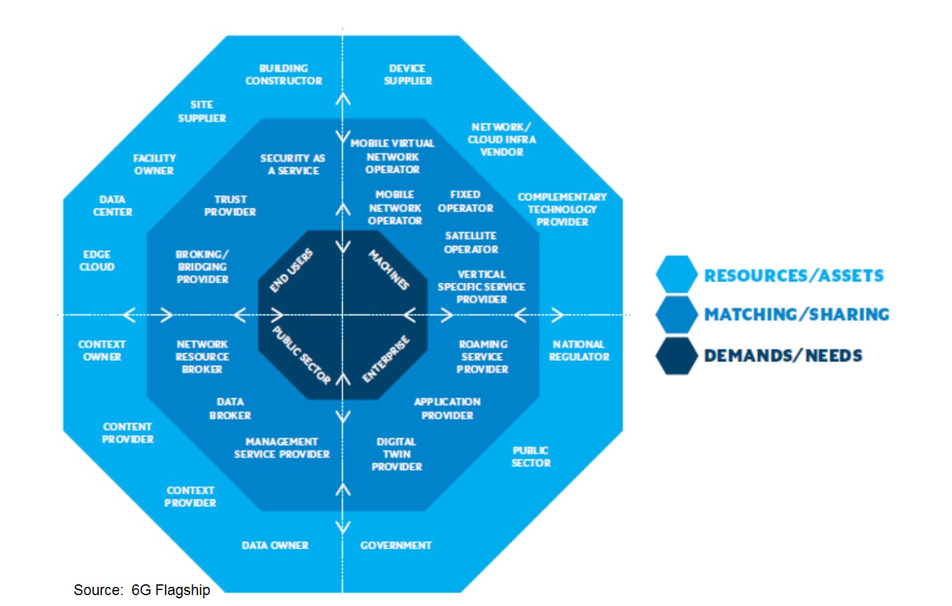Just as 5G is beginning to make its way into cities across the globe, momentum for the next phase of mobile communications – 6G – is beginning to take hold. While discussions around exactly what is 6G remain in an embryonic state – there has been a surprising amount of activity related to the subject.
The University of Oulu, Finland formed the Finnish 6G Flagship – an eight-year program backed by 251 million euros of government funding to not only support the finalization of the 5G standard, but technology components and solutions needed for the 2030 wireless era – the era of 6G. Meanwhile, Japan’s government – as part of its New Energy and Industrial Technology Development Organization – will devote 2.03 billion dollars to encourage private-sector research and development on 6G.
So what exactly is 6G?
That is the multi-billion-dollar question. However, it is clear that there is a vision that 6G will bridge the physical with the virtual. In what NTT Docomo refers to as “cyber-physical fusion” and others refer to as “wireless cognition,” it’s where AI and edge computing will be used to reproduce the real world in cyberspace and emulate it beyond real-world constraints. Huh? Perhaps this definition: where human intelligence could eventually be sent over the air instantaneously. Yep. I’m confused too.
But when I think about 6G – especially after reading the numerous white papers on the topic – all I can think about is The Jetsons. Flying cars! Smell-o-vision! Humanoid robots! Simply asking for things and they appear! These are just some of the many applications that could be enabled by 6G.
Regardless of this nebulous definition, what has been envisioned is a technology that will use new frequency bands above 95GHz (including THz frequencies) allowing future devices to support a variety of high-bandwidth applications, such as 3D imaging and sensing – making mixed reality applications a reality. To put this in perspective, these frequencies are 40 times greater than 4G cellphone frequencies, and 3-4 times greater than 5G frequencies.
A truly ubiquitous network
The DoCoMo 6G white paper envisioned ubiquitous coverage to include land, sea, sky and even space. This would allow for the deployment of 6G technology in places where populations are limited and allow unmanned factories and such to be constructed in areas without humans. The 6G network is envisioned to be three-dimensional to include not only traditional cellular networks, but also incorporate geostationary satellites, low-earth orbit satellites and high-altitude pseudo satellites (HAPS) that can be stationed at a fixed location at an altitude of 20km and form a wide coverage area with a cell radius of greater than 50km on land.
Key performance indicator highlights for 6G include the following:
- Peak throughput exceeding 1Tbit/s
- 0.1ms latency
- Ability to span land, sea (200NM), sky (10,000) and space
- Sensing capabilities and high-precision positioning (cm-order)
- Support for 10m/km2 devices
- 99.99999% reliability

6G use cases
The use cases for 6G will go beyond the categories of 5G: enhanced mobile broadband (eMBB), massive support for IoT (mMTC) and ultra-reliable low-latency (URLLC) into new combinations that do not fall into these categories.
While the NTT white paper was heavily focused on the technological aspects of 6G, the 6G Flagship white paper took a much broader approach to examine not only technology but societal impacts and challenges around what is referred to as 6G Humanity, aligning it with the Sustainable Development Goals of the UN’s 2030 Agenda.
Areas of additional focus for 6G include requirements for trustworthiness and resilience as well the shift towards a data sharing/data market economy changing the existing roles, while introducing new stakeholders.
New business models, new stakeholders
It is expected that the way data is created, processed and consumed will continue to change and with that comes changes to data ownership, business models and policy. With a range of applications that exceeds any previous generation of mobile technology, the resources and assets needed to support these applications will be provided by a range of different stakeholders – allowing for a mix-and-match environment across operators, resource brokers, service and application providers as well as trust and security providers.

6G challenges
Of course, the path to 6G will be full of challenges, mostly due to the fact that much of the technology to support THz frequencies will need to be developed, spectrum will need to be acquired and regulatory policy will need to be created/expanded.
Oh … and there is that small detail: cost.
Nonetheless, 6G provides R&D departments across the globe with years of opportunity to go where no technology has gone before …
